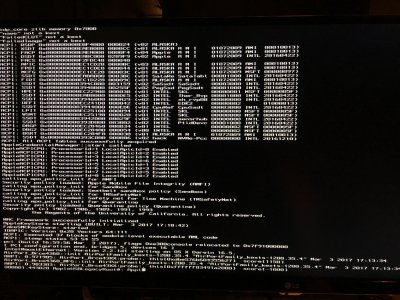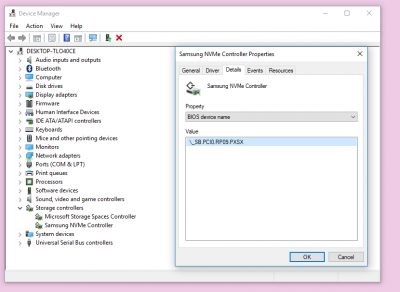- Joined
- Jun 10, 2017
- Messages
- 21
- Motherboard
- MSI Z690 Tomahawk DDR4
- CPU
- i7-12700K
- Graphics
- RX 580
- Mac
- Mobile Phone
Hi RehabMan,
I have a fully functional Sierra 10.12.6 that boots from an SSD.
I've added an EVO 960 NVME M.2 that it's seen by the BIOS, with the idea to switch from the SSD to NVME after cloning it. But first of all I have to make the macOS see the NVME.
I downloaded from GitHub and followed the procedure to create the HackrNVMeFamily-10_12_6.kext. I did not use --spoof
I installed the kext in S/L/E, but after the reboot the system panics at boot time. Obviously I managed to boot into recovery and delete the kext, in order to be able to boot, but how do I fix the problem with the kext?
Am I missing something? Did I do something wrong?
Hardware:
MTB: Gigabyte GA-Z170X-UD5 TH / 100 series chip-set
I have a fully functional Sierra 10.12.6 that boots from an SSD.
I've added an EVO 960 NVME M.2 that it's seen by the BIOS, with the idea to switch from the SSD to NVME after cloning it. But first of all I have to make the macOS see the NVME.
I downloaded from GitHub and followed the procedure to create the HackrNVMeFamily-10_12_6.kext. I did not use --spoof
I installed the kext in S/L/E, but after the reboot the system panics at boot time. Obviously I managed to boot into recovery and delete the kext, in order to be able to boot, but how do I fix the problem with the kext?
Am I missing something? Did I do something wrong?
Hardware:
MTB: Gigabyte GA-Z170X-UD5 TH / 100 series chip-set


